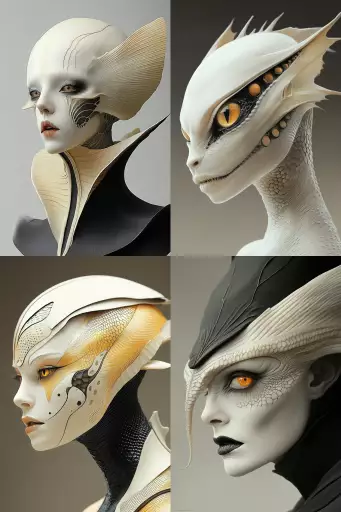Explore the Best AI Image Gallery

Beyond the Canvas: 5G and the Future of Creative Expression
The fifth generation of wireless technology, 5G, is not just about faster internet speeds. Its a paradigm shift that promises to revolutionize various industries, including the creative sector. By enabling ultra-low latency, massive data transfer capabilities, and seamless connectivity, 5G is poised to unlock unprecedented possibilities for artists, designers, musicians, and storytellers.
Imagine a world where immersive virtual reality (VR) experiences become commonplace, allowing audiences to step inside artworks or interact with digital creations in real time. 5Gs low latency will make these interactions seamless and responsive, blurring the lines between the physical and digital realms. Artists can leverage this technology to create dynamic, interactive installations that respond to viewers movements and emotions, fostering a deeper level of engagement.
Augmented Reality: A New Dimension for Creativity
Augmented reality (AR), which overlays digital content onto the real world, is another area where 5G will have a profound impact. With its enhanced speed and reliability, 5G can power sophisticated AR applications that enrich our creative experiences. Designers can use AR to visualize their creations in three dimensions before they are physically built, while musicians can incorporate interactive AR elements into their performances, engaging audiences in novel ways.
Collaborative Creativity: Breaking Down Barriers
5Gs ability to connect individuals and devices instantly will foster a new era of collaborative creativity. Artists from different locations can work together seamlessly on projects, regardless of geographical boundaries. Imagine a team of musicians composing a piece remotely, each contributing their unique talents through 5G-powered collaboration tools. This technology has the potential to break down barriers and bring people together in exciting new ways.
Ethical Considerations: Navigating Uncharted Territory
As with any transformative technology, 5G raises important ethical considerations that need careful attention. One concern is data privacy. With increased connectivity and data sharing, its crucial to ensure that user information is protected and used responsibly. Another consideration is the potential for bias in AI-powered creative tools. Its essential to develop algorithms that are fair and inclusive, avoiding the perpetuation of harmful stereotypes or discrimination.
Future Trends: A Glimpse into the Creative Landscape
The future of creativity with 5G is brimming with possibilities. We can expect to see:
- More immersive and interactive art experiences
- Personalized creative tools tailored to individual needs
- Decentralized platforms for artists to connect and collaborate
- The rise of AI-powered creative assistants
- New forms of artistic expression yet to be imagined
5G is more than just a technological advancement; its a catalyst for change. By embracing its potential while addressing its ethical challenges, we can unlock a future where creativity knows no bounds.













](https://images.ai-img.art/thumbnails/150/be741cf174069af70d6024cd8068486bb0e105a3407dced31453a7f34a8a81c0.webp)


](https://images.ai-img.art/thumbnails/150/fce62c4116e8ab176f346542ad384a3f08ded74881bd6c4d9465812a98d8963b.webp)



](https://images.ai-img.art/thumbnails/150/24923a08277bc0d1c7a9581472f42b8f1ecb5d1060d2e00c192533cd8ccf7f05.webp)










](https://images.ai-img.art/thumbnails/150/baffcf49dda195ed88eb109d62031bb483e314a94f1a665f889c6bd41b52f7b2.webp)